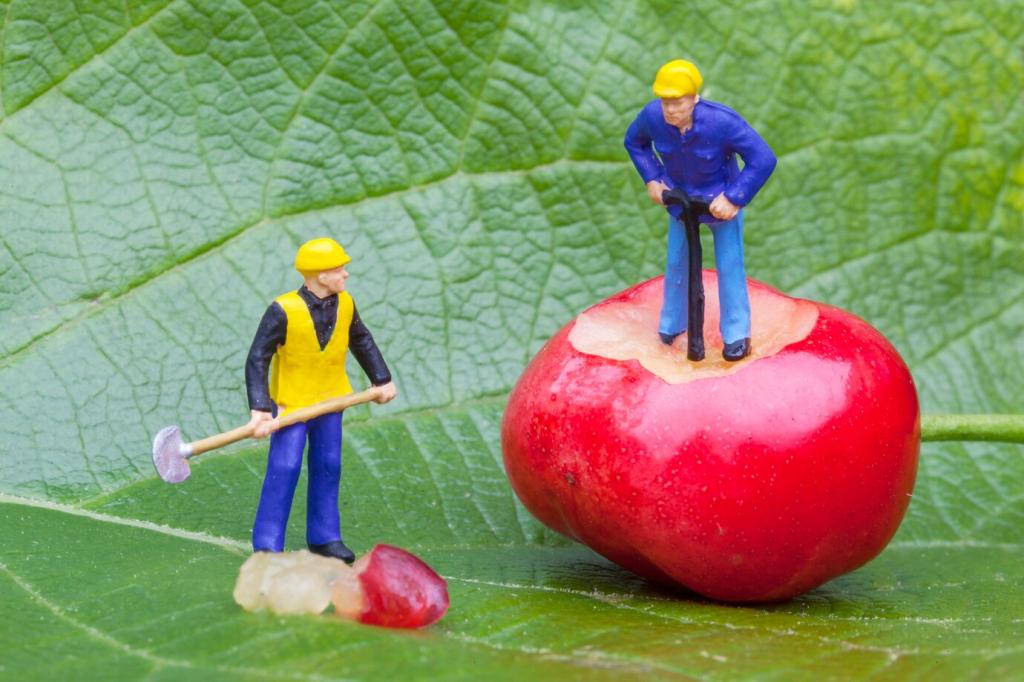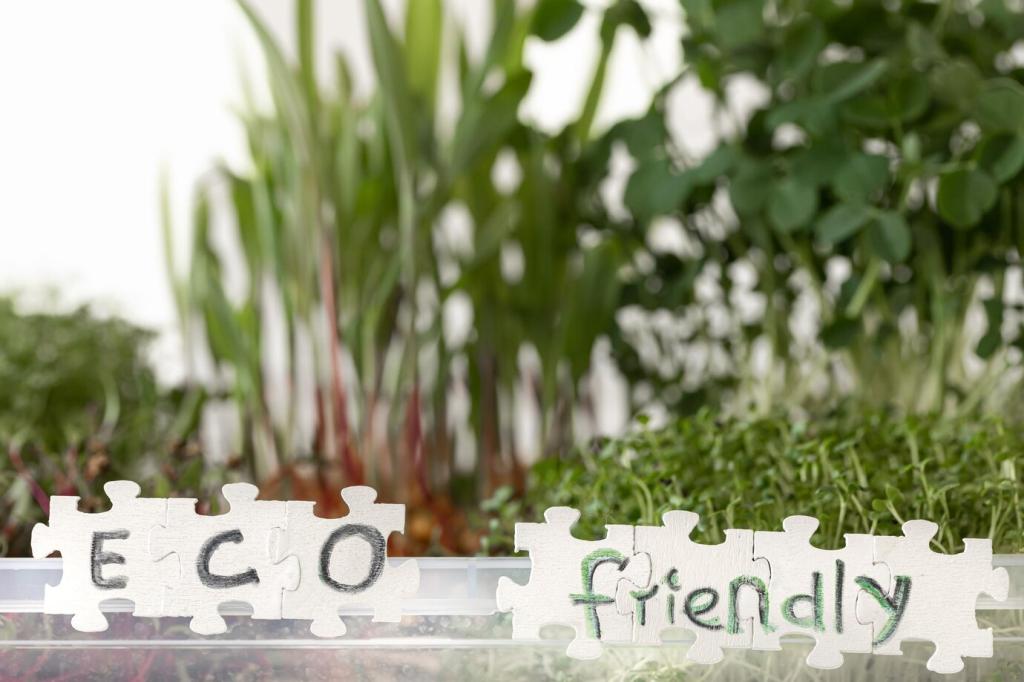Plant-Based Paints and Varnishes for Furniture Maintenance
Why Plant-Based Finishes Belong in Your Home
Plant-based finishes rely on renewable ingredients like linseed, tung, and hemp oils, plus pine rosin and bio-based alkyds. They cure into resilient films that highlight wood character, making future care easier and more forgiving than brittle synthetic shells.
Why Plant-Based Finishes Belong in Your Home
Lower-VOC, low-odor formulations help reduce harsh fumes during application and curing. While all finishes require ventilation, many plant-derived options favor cleaner indoor air, keeping busy kitchens, nurseries, and workshops more pleasant for everyone at home.
Why Plant-Based Finishes Belong in Your Home
Beyond green labels, plant-based finishes can be repaired without aggressive stripping, extending a piece’s life. That longevity reduces waste, conserves resources, and connects your maintenance routine to a meaningful, sustainable story worth sharing with friends.
Selecting the Right Botanical Finish for Each Piece
High‑Traffic Surfaces and Durability
For tabletops and desks, consider tung-rich blends or bio-alkyd varnishes that form tougher films. They resist abrasion, coffee rings, and frequent wiping, yet remain repairable with light sanding and a targeted refresh coat when needed.
Moisture, Heat, and Kitchen Realities
In kitchens, moisture-tolerant tung oil varnishes or waterborne plant-resin finishes hold up better to steam and wiping. Always test near sinks and appliances, and maintain a routine to prevent water from lingering on edges or seams.
Tone, Sheen, and Grain Expression
Linseed and walnut oils warm the color and deepen figure; hemp can keep tones slightly lighter. Choose matte for a soft, modern look, or satin for gentle glow. Apply test swatches to preview how the grain will respond.
Preparation and Application That Make Results Last
01
Vacuum dust, wipe with a lint-free cloth, and sand progressively, finishing around 220–320 grit depending on the wood. Remove residue thoroughly; any trapped dust can telegraph through thin botanical films or interrupt uniform absorption.
02
Wipe or brush with the grain in thin coats. For oils, allow penetration, then wipe back excess to avoid tackiness. Some artisans wet-sand the first coat with oil, creating a silky slurry that fills pores and levels beautifully.
03
Plant-based finishes polymerize as oxygen crosslinks oils and resins. Good airflow, moderate humidity, and time are essential. Resist heavy use too soon; a gentle week can mean years of easier maintenance and fewer deep repairs later.
Coloring Wood with Botanical Stains and Tints
Natural Stains from the Pantry and Garden
Walnut hull, tea, and coffee washes can introduce warm browns; annatto adds subtle golden notes; indigo offers blue accents. Always lock color under a compatible plant-based topcoat to stabilize tone and resist routine cleaning cycles.
Colorfastness and Sunlight
Many botanical colorants shift under UV. Position pieces thoughtfully, consider UV-filtering window film, and choose topcoats with UV stabilizers when available. Embrace gentle patina, or plan periodic touch-ups to keep hues consistent over time.
Test Boards Save Regret
Create small samples on the same wood species, layering stain and topcoat exactly as planned. Evaluate in daylight and evening light, then share your swatches with our community and ask for feedback before committing to the full piece.
Maintenance Routines That Keep Finishes Fresh
Use a soft cloth and a mild, plant-based soap solution for routine cleanup. Avoid harsh abrasives and saturated sponges. Quick attention to spills prevents water marks and preserves that hand-rubbed glow you worked hard to achieve.


Maintenance Routines That Keep Finishes Fresh
When sheen dulls or dryness appears, clean, lightly degloss with a fine abrasive pad, and apply a thin maintenance coat. Buff after curing. This minimal ritual restores luster without stripping, saving time, materials, and cherished patina.
Rag Safety and Spontaneous Combustion
Oily rags can self-heat as oils oxidize. Lay them flat to dry outdoors, submerge in water, or store in a sealed metal container. Never toss wadded rags into a pile; safe habits prevent workshop fires.
Allergy Awareness and Ingredient Clarity
Nut-derived oils, citrus solvents, and natural fragrance components may irritate sensitive users. Check labels, request safety data sheets, and patch-test in a discreet spot. Share your experiences in the comments to help others choose wisely.
Durability: Setting Real Expectations
Modern plant-based varnishes, especially tung-rich and bio-alkyd blends, provide robust protection. They may wear more gracefully than crack, enabling easy renewal. Invite questions about your use case below, and we’ll help you pick a resilient system.
A Heirloom Table, Reborn with Tung and Pine
A scratched walnut table from my grandmother’s kitchen looked tired and gray. After gentle sanding, a citrus wipe, and three thin coats of tung-based varnish with pine rosin, the grain erupted like ripples catching autumn light.
A Heirloom Table, Reborn with Tung and Pine
We switched from harsh sprays to a mild, plant-based soap and a soft cloth. Monthly, we buff lightly. The surface feels like wood again, not plastic, and coffee cups leave stories, not scars, across weekend breakfasts.
A Heirloom Table, Reborn with Tung and Pine
Have a piece waiting for a second life? Tell us about the wood, room conditions, and your goals. Subscribe for guides, ask questions below, and share before-and-after photos to inspire others choosing plant-based care.
